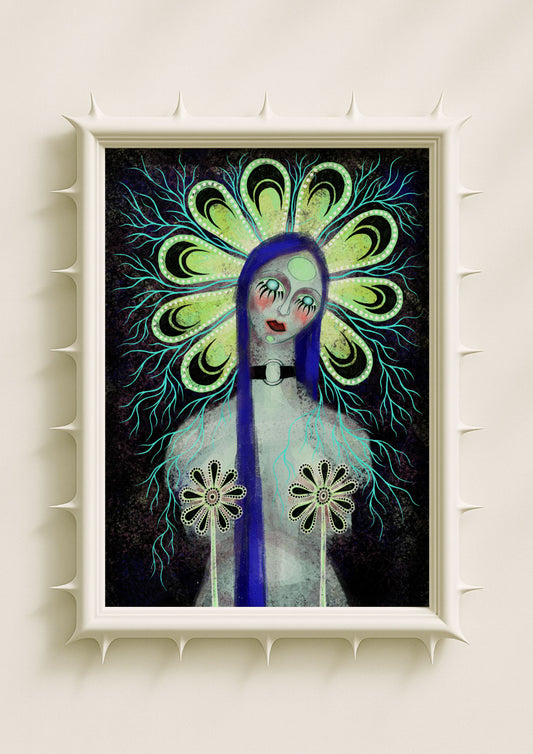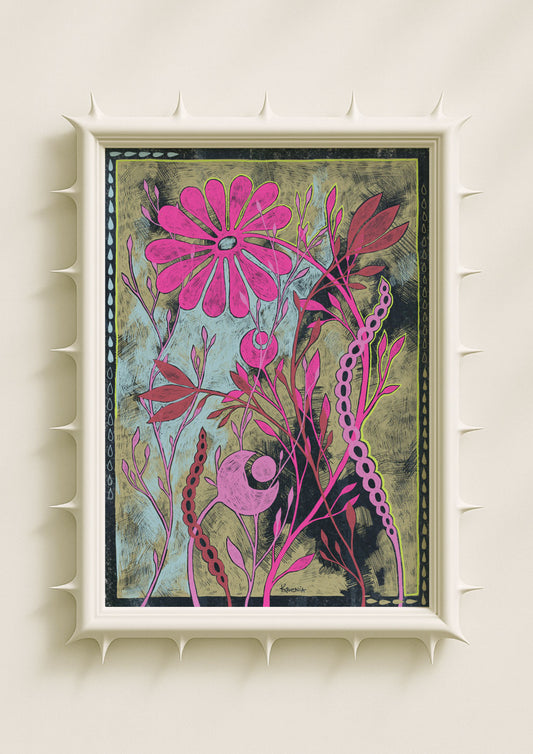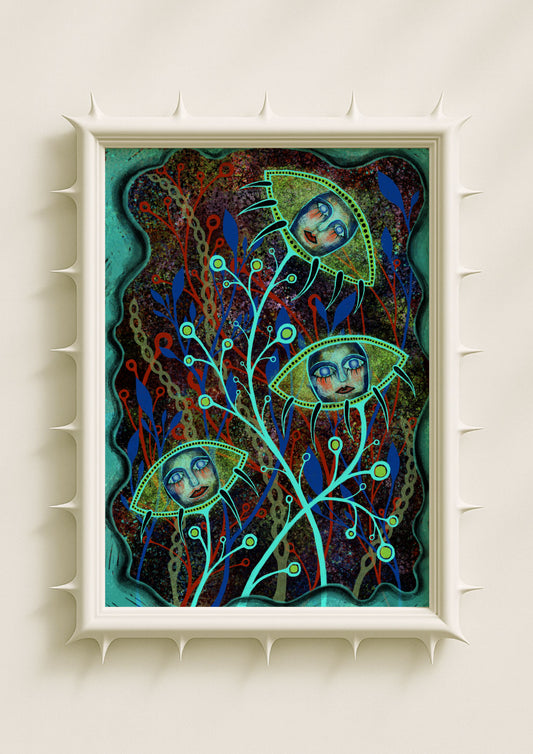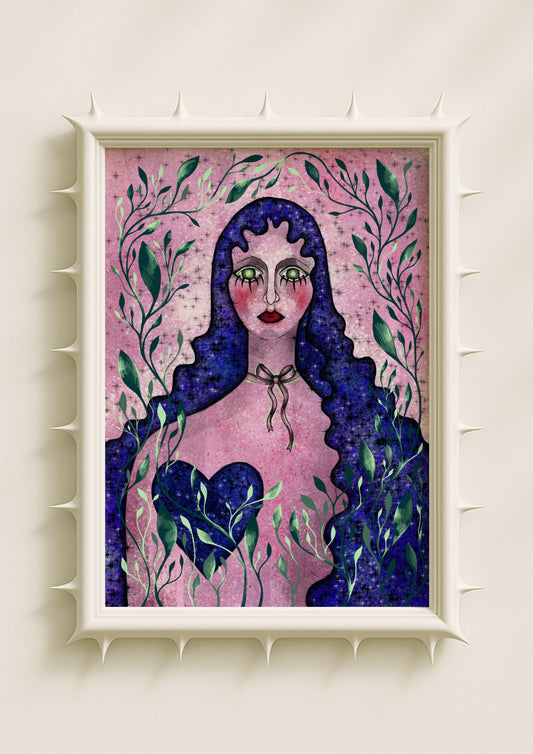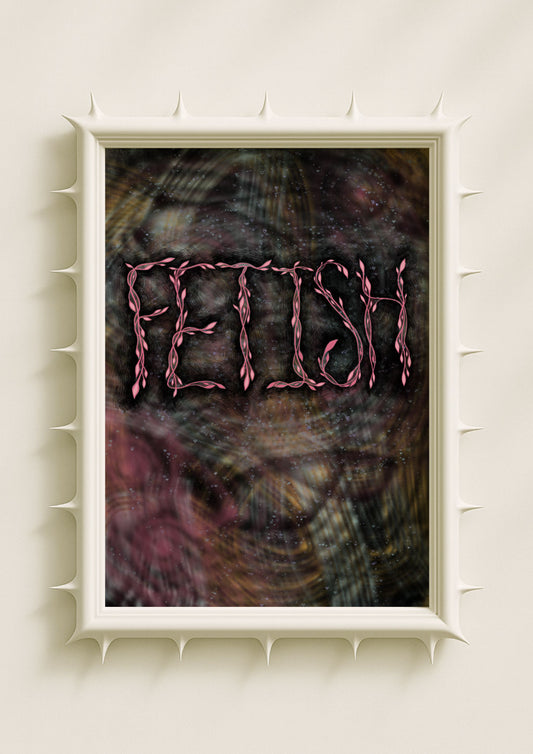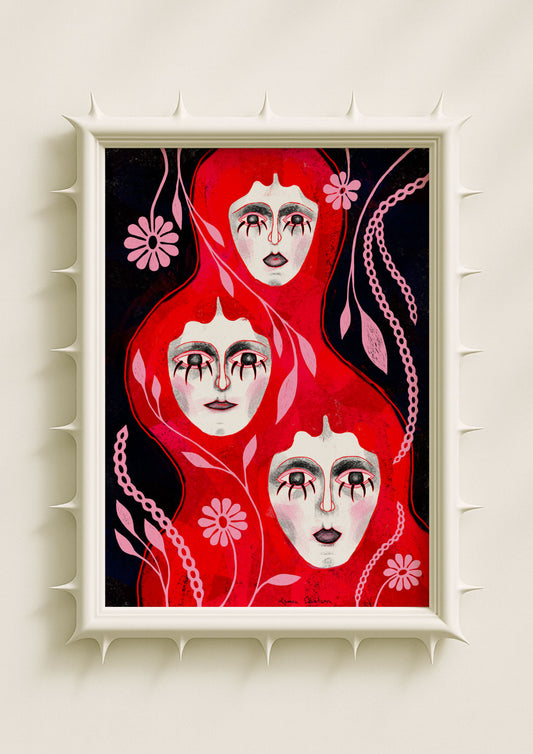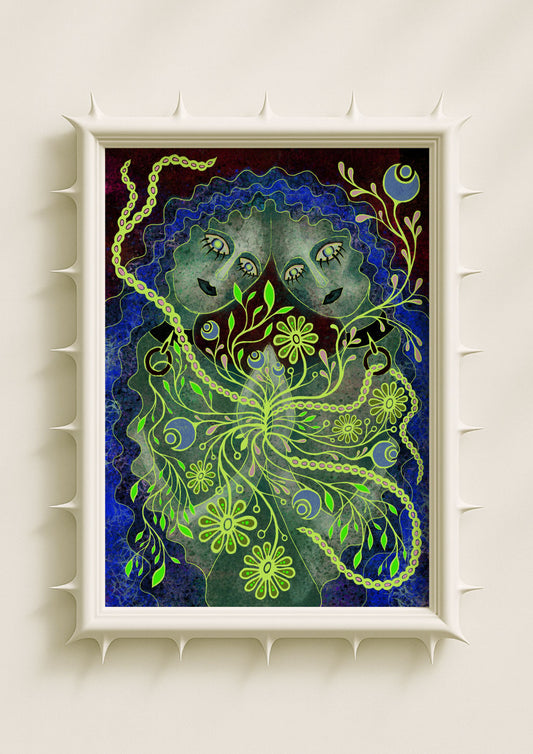Why Serpents Appear in My Visual Language
When I draw or paint serpents, I never think of danger first. I think of movement, of softness, of the way a line can curve like a breath. In my compositions, snakes behave less like threats and more like emotional extensions of the figure they wrap around. They become ribbons of feeling, protectors, witnesses, and symbols of transformation. Their presence shifts the atmosphere of a wall art print instantly, adding intimacy and tension at the same time — a quiet, ancient rhythm living inside a very contemporary space.
Fluidity as a Form of Expression
A snake’s body carries its own kind of elegance. The way it bends, coils, and stretches creates a visual music that I find deeply compelling. When I integrate serpents into portrait posters or surreal botanical pieces, I use them almost like brushstrokes — elongated shapes that guide the viewer’s eye across the composition. They weave through the figure with softness, creating pathways of attention and emotion. In a room, this fluid movement adds visual harmony, almost like a slow pulse running across the wall.

Renewal and the Logic of Shedding Skin
One of the most powerful aspects of snake symbolism is its association with renewal. The act of shedding skin has always fascinated me — a physical metaphor for release, growth, and the courage to continue becoming. When a snake appears in my art, it often represents that inner movement. Not a dramatic change, but a quiet internal shift. A slow evolution. As wall art, this symbolism resonates deeply with people going through emotional transitions, giving the room not just atmosphere but meaning.
Feminine Power and Ancient Memory
The serpent has long been tied to feminine archetypes — not in the simplistic way pop culture sometimes portrays, but in the older, deeper sense. Before snakes were reduced to symbols of fear, they were protectors, healers, and sacred companions of goddesses. In my work, I like returning to that older narrative. Serpents wrap around the body not to restrain, but to echo its power. They highlight the softness of the figure while drawing attention to its strength. The combination creates a tension that feels sensual, spiritual, and grounded at once.
Serpent Forms in Portrait Posters
In some of my pieces, snakes rise around the face like protective flora. In others, they rest on the shoulders, curve behind the neck, or intertwine with elongated petals. They behave like extensions of the figure’s emotional state — visual metaphors rather than literal creatures. Their shapes help hold a composition together, functioning almost like architectural lines. In interiors, this creates a striking effect. A portrait accented with serpent forms adds complexity without overwhelming the space. The print becomes a focal point with depth and intention.

Botanical Serpents and Emotional Ecology
Sometimes the serpents in my artwork merge with botanical motifs until they become inseparable — vines shifting into bodies, petals into scales, stems into soft curves. This fusion creates what I think of as an emotional ecology, where nothing is fully separate. Everything breathes together. It introduces a dreamlike quality that pairs beautifully with both minimalist and eclectic homes. Against a clean wall, these serpent-botanical posters feel almost ceremonial, anchoring the space with a quiet, surreal presence.
Colour as a Symbolic Layer
The palette of a serpent changes its meaning. A pale lavender snake feels protective, almost ethereal. A deep green one evokes nature and resilience. A muted pink or peach snake becomes unexpectedly tender, softening the entire mood of the piece. When I choose colours for these works, I think of the emotional undercurrent they carry. On a wall, these tones allow serpentine imagery to feel intimate rather than aggressive — a whisper instead of a warning.
Why Snake Imagery Belongs in Modern Interiors
Serpents bring contrast into contemporary spaces. Their curves soften geometric furniture. Their symbolism deepens minimalist rooms. Their presence creates a focal point that is emotional rather than loud. In homes craving atmosphere, symbolism, and a sense of inner life, snake-based posters slip in naturally. They give the room a subtle narrative — something that feels ancient, feminine, and quietly powerful.

A Symbol that Lives, Moves, and Transforms
In the end, the serpent in my art is a reminder of movement. Of the inner cycles we go through. Of the softness hidden inside power, and the power hidden inside softness. When these serpents enter a poster, they transform it. When the poster enters a room, it transforms the space. And when someone chooses to live with it, the symbolism continues to shift — a living metaphor hanging gently on the wall.
